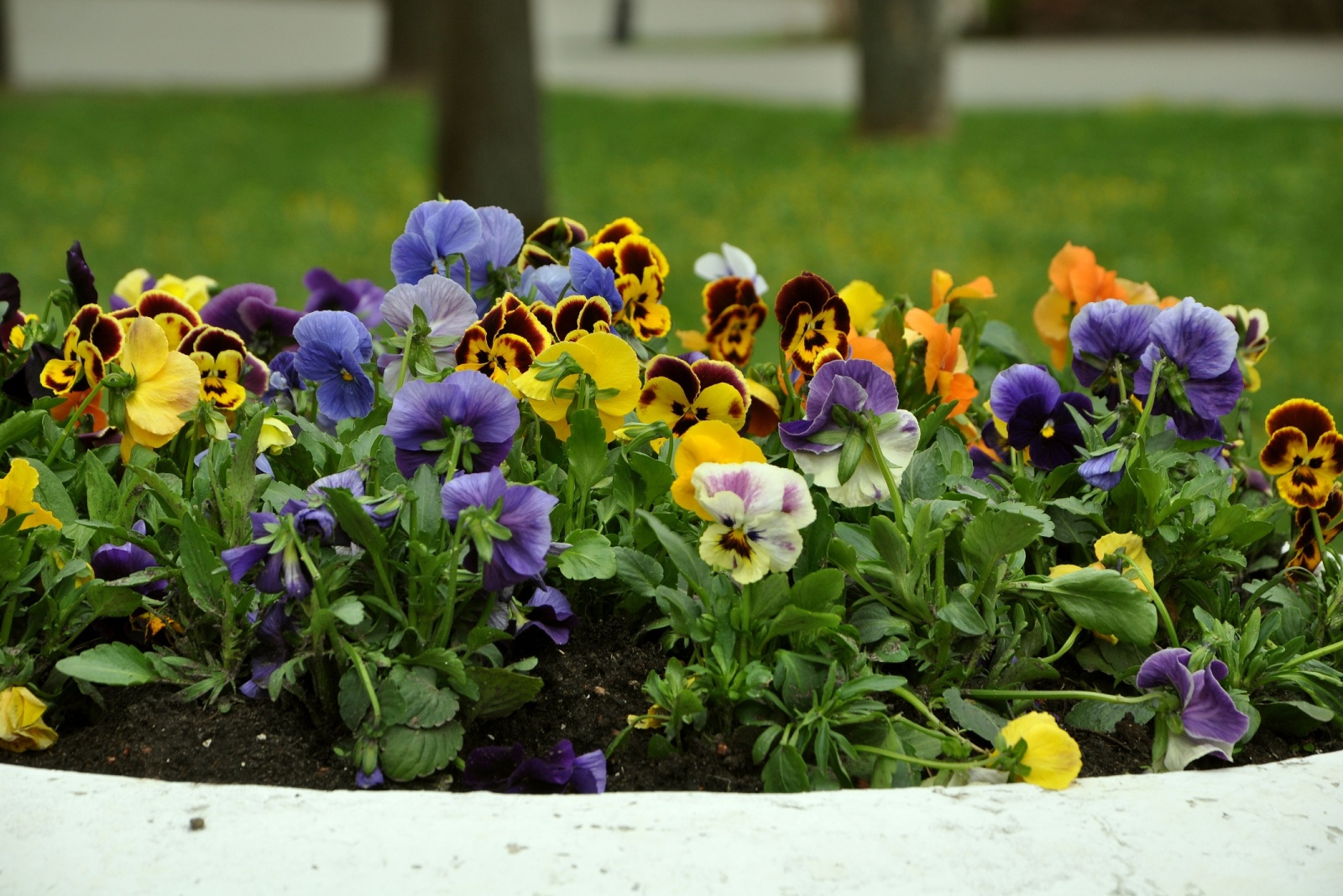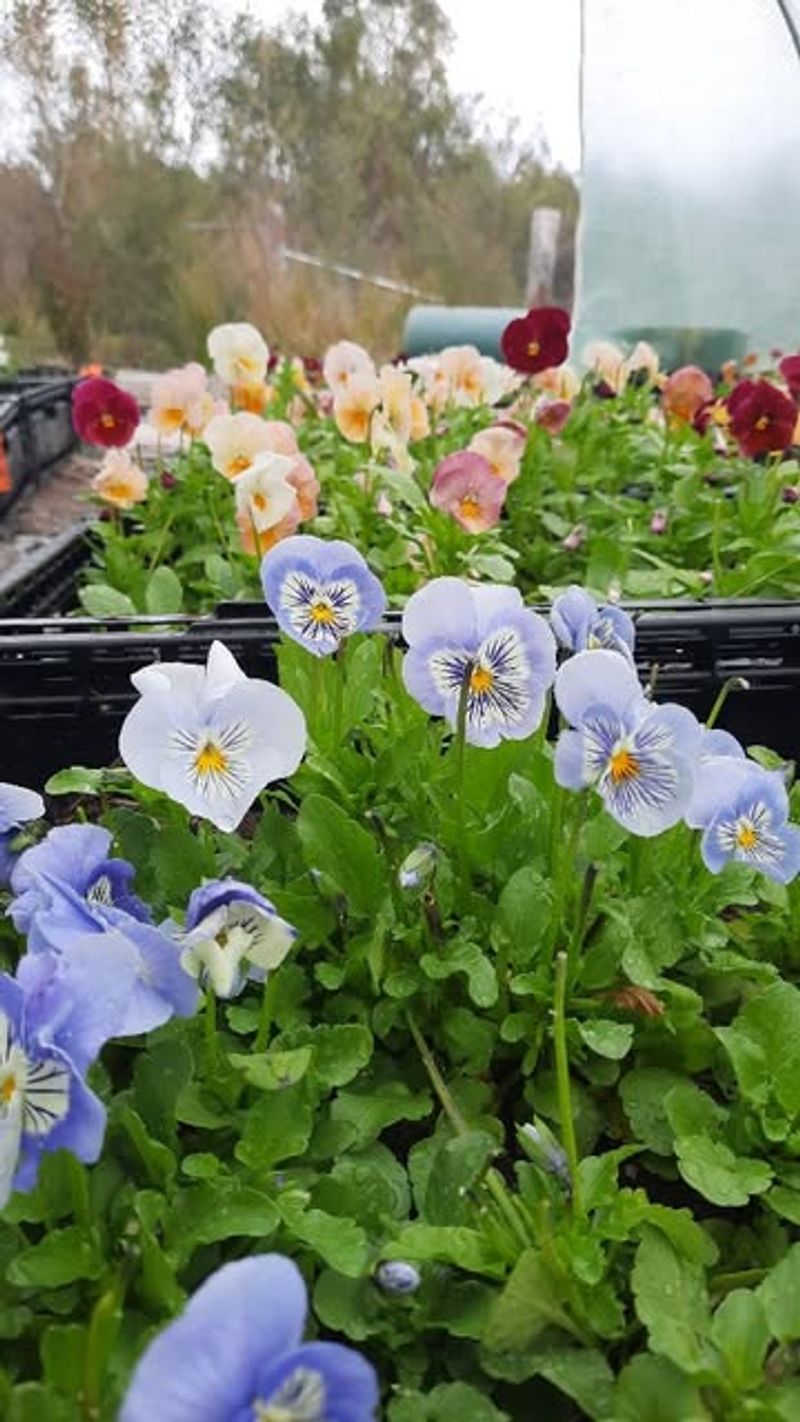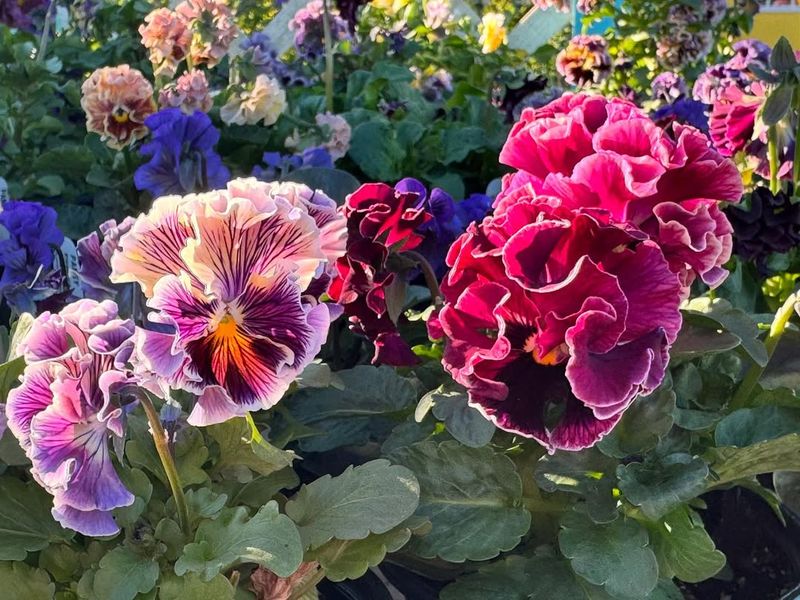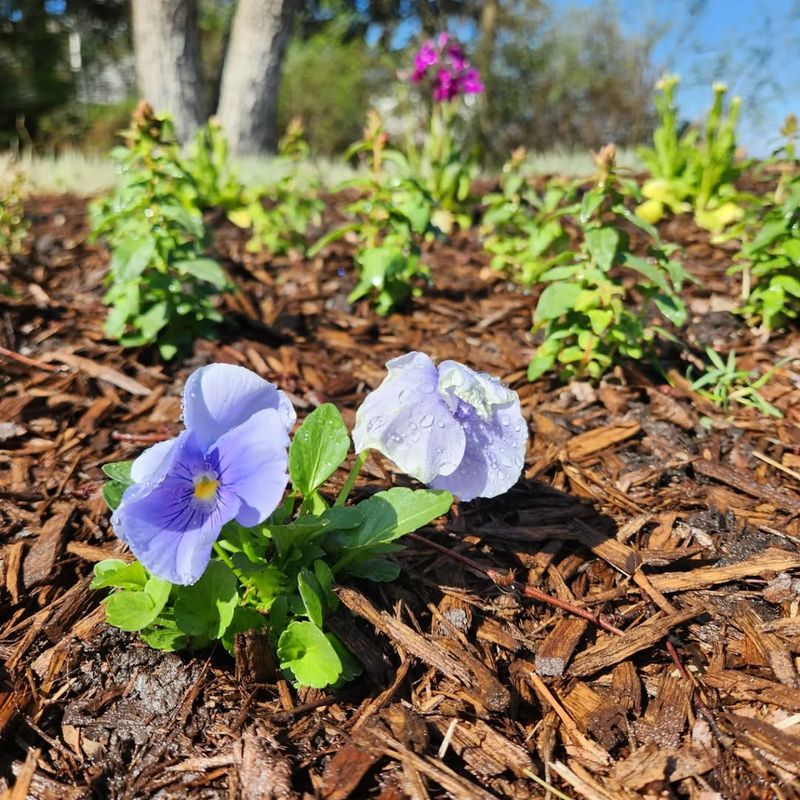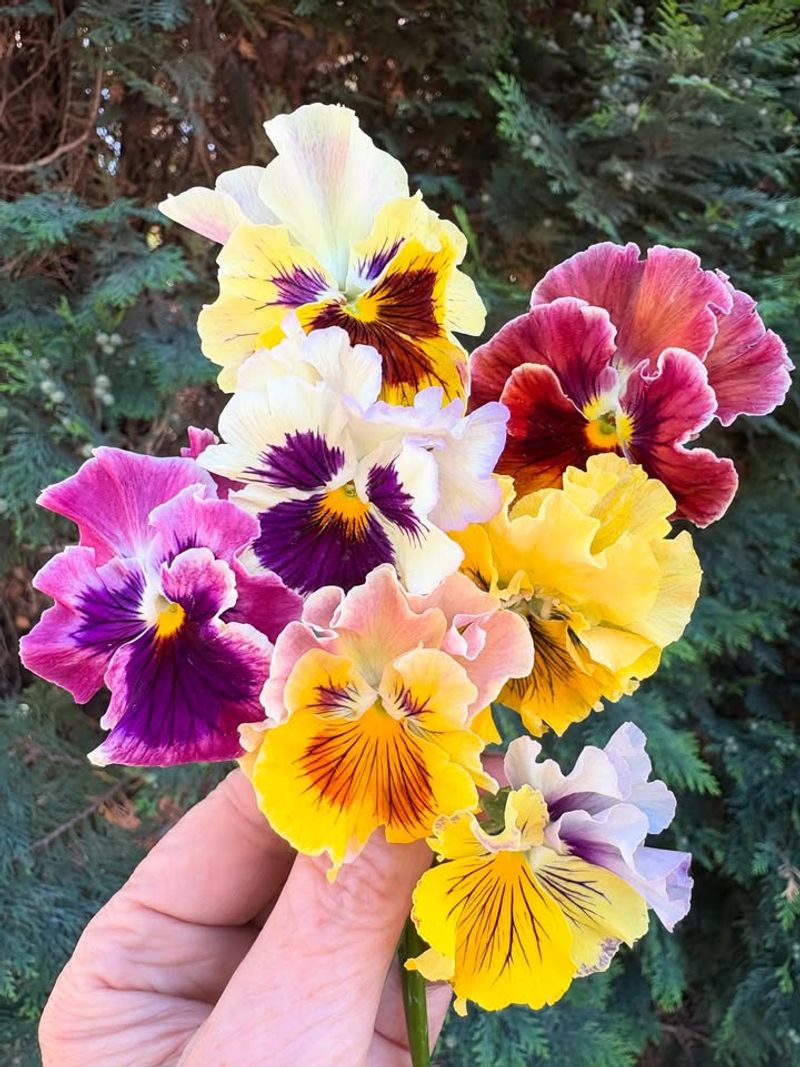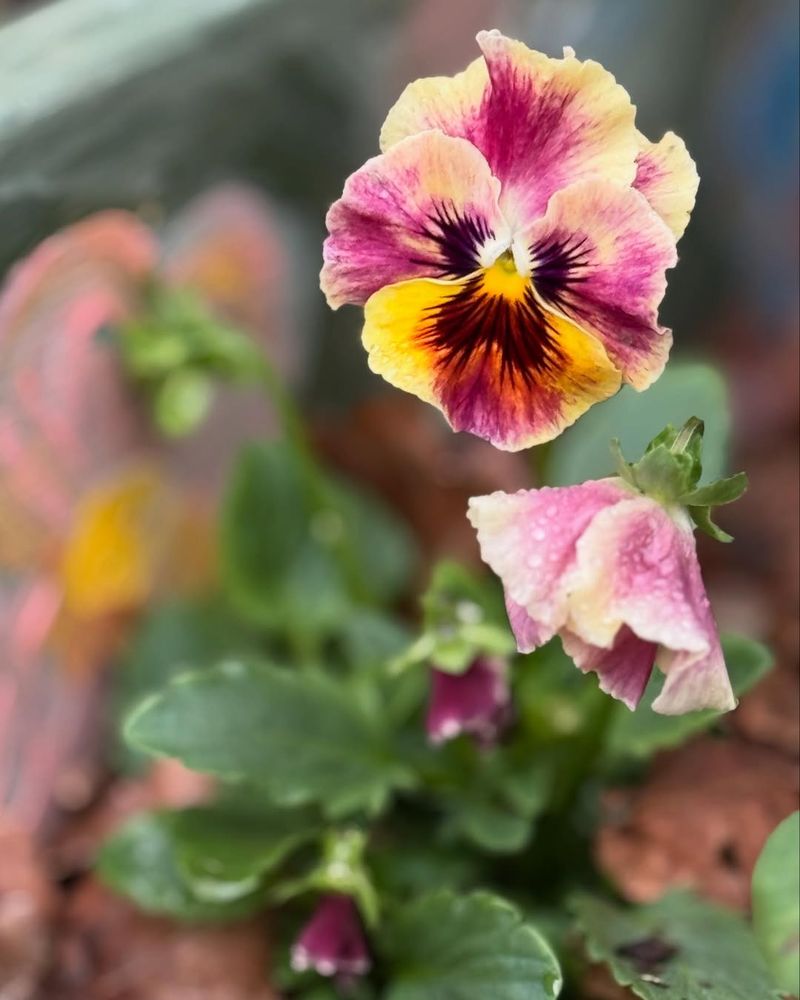When most flowers call it quits for the season, North Texas gardens don’t have to settle for brown beds and bare planters.
Winter here may be mild compared to other parts of the country, but it can still swing from chilly mornings to sudden warm spells — and that’s where the right flower makes all the difference. The one bloom that can handle it with color to spare is the dependable pansy.
1. Pansies Love Cold Weather
Most plants shrivel up when temperatures drop, but pansies actually get stronger. North Texas winters provide the perfect climate for these tough little flowers to show off their best blooms.
Cold snaps that would kill other annuals barely slow pansies down. They can handle frost, light freezes, and even occasional snow without missing a beat.
The cooler air keeps them blooming longer than they would in warmer months. Your garden stays colorful from November through March with barely any effort on your part.
2. Planting Time Matters
Getting pansies in the ground at the right moment makes all the difference. October and early November are your best windows for planting in North Texas gardens.
Plant too early when soil is still warm, and the roots struggle to establish properly. Wait too long into winter, and they won’t have time to settle in before the coldest days arrive.
Aim for when nighttime temperatures consistently stay in the 50s. Your pansies will develop strong root systems before December hits.
3. Sunlight Needs Are Flexible
Pansies adapt to different light conditions better than many flowers. During winter months, they handle full sun beautifully since the rays aren’t as intense as summer.
If your garden has spots with partial shade, pansies will grow there too. They’re surprisingly forgiving about where you plant them, making them perfect for tricky areas.
Morning sun with afternoon shade works wonderfully. Just avoid deep shade under thick trees where they won’t get enough light to produce those gorgeous blooms.
4. Watering Requirements Stay Simple
Forget complicated watering schedules—pansies keep things easy. During North Texas winters, natural rainfall usually provides enough moisture for healthy growth.
Check the soil every few days by sticking your finger about an inch deep. When it feels dry at that depth, give them a good drink of water until the soil feels moist.
Avoid overwatering, which causes more problems than underwatering during cold months. Soggy roots in winter temperatures invite diseases that can damage your entire pansy bed.
5. Colors Come In Endless Varieties
Walking through a garden center’s pansy section feels like stepping into a rainbow. You’ll find solid colors, two-tones, and flowers with faces created by darker center markings.
Purple, yellow, orange, red, white, and pink pansies all thrive equally well in North Texas. Many gardeners mix several colors together for eye-catching combinations that brighten dreary winter days.
New varieties appear each season with unique patterns and shades. Experimenting with different color schemes keeps your garden fresh and interesting year after year.
6. Deadheading Keeps Blooms Coming
Removing faded flowers might seem like extra work, but it pays off big time. When you pinch off old blooms, the plant puts energy into making new flowers instead of producing seeds.
Grab each spent flower between your thumb and finger, then snap it off at the base. Do this once or twice a week for continuous blooms throughout winter.
Skipping this step means fewer flowers and a messier-looking garden bed. Spending just ten minutes weekly keeps your pansies looking fresh and blooming nonstop.
7. Fertilizer Gives Extra Boost
Pansies aren’t heavy feeders, but a little fertilizer helps them perform their best. Use a balanced, water-soluble fertilizer every three to four weeks during the growing season.
Mix the fertilizer at half the strength recommended on the package label. Too much feeding can actually hurt your plants by encouraging weak, leggy growth instead of sturdy stems.
Apply fertilizer when soil is already moist to prevent root burn. This gentle feeding schedule keeps flowers coming strong from fall planting through early spring in Texas.

